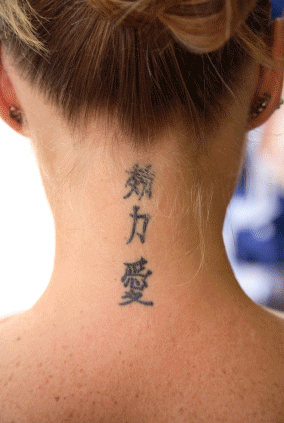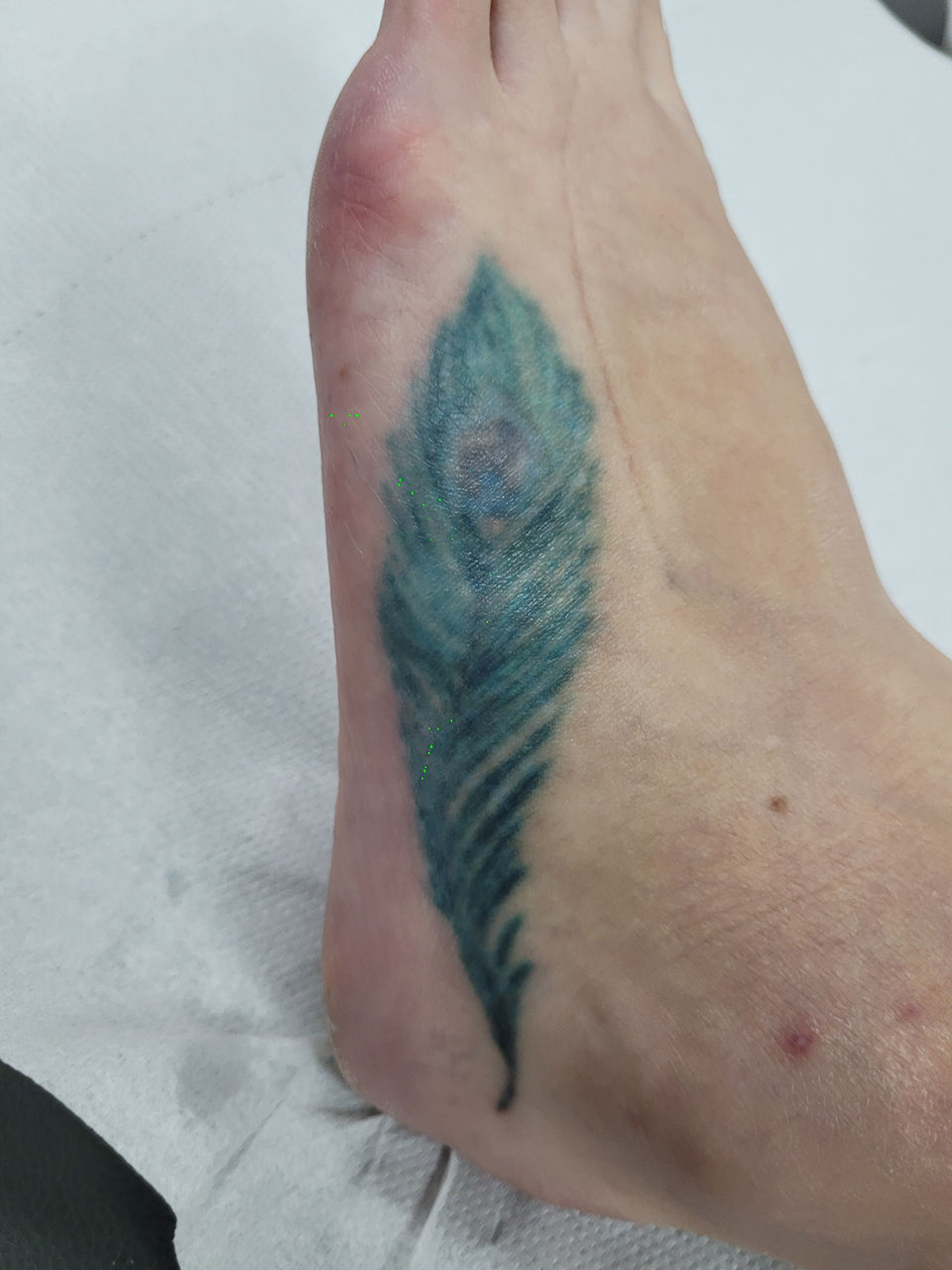FREE Consultation
FREE Consultation
FREE Consultation
FREE Consultation
FREE Consultation
v1.05
LASER TATTOO REMOVAL
Making a change
We understand that sometimes in life we change our minds, so at Erasure Skin we specialise in giving clients tattoo removal to help towards changing their tattoo or removing it. We provide individual treatment that matches your requirements based on the type, age, position, colours and other factors.


The science
The body views ink pigmentation within the dermis layer of the skin as a foreign body. The ink has worked int the fibroblasts/connective tissue of the epidermis and dermis. The body is constantly sending out white blood cells (leukocytes) in the form of macrophages to capture and dispose of this invader material. However due to the size of the particles it can generally only get the smallest parts near the edge, so the tattoo fades slightly over decades.
Laser Tattoo removal treatment accelerates the process by sending a high energy pulse of laser light down to the pigment and shatters it into minuscule pieces which are then able to be dealt with by the macrophages.
However, this isn't an overnight process, the body takes time to work its magic. Over the months following the treatment the effects will gradually take place, with the immune system flushing out the pigment and the healing process in the dermis restructuring the connective tissue, with each treatment reducing the amount of pigment and visibility of the tattoo.
Influence
There are a number of factors that affect the way in which laser tattoo removal affects the disposal of ink pigmentation. One of the most important aspects is your general health. White blood cell activity is a part of your overall health so fit people who drink plenty of water and regular exercise are more likely to find quicker results.
However, there are several factors that are outside your control, such as the type of ink used, how old the tattoo is, the colour of your skin, how it was applied (i.e. a professional tattoo artist using a coil or rotary machine or a needle by a friend), where on the body the tattoo is located and the colours used.
A significant factor in success is ensuring you follow the aftercare treatment prescribed by your practitioner. Failure such as adhering to protect the area from sunlight or picking at the area will affect the results significantly.

Alternatives
There really is no other choice. Laser Tattoo is the only safe and effective method of removing unwanted tattoos (or reducing existing tattoos in preparation to have a replacement tattoo put over the top).
Tattoo ink is locked relatively deep in the layers of the skin and so can't be scraped away without scarring, caused by damage to the dermis. Dermabrasion has been used in the past but with the ink so deep there is limited effect beyond the immediate surface of the skin. Getting deep enough would cause pigmentation damage and take 3+ months to heal.
Excision will almost guarantee to leave scarring with large tattoos requiring skin grafts. Only really worth considering if you have an allergic reaction to the tattoo ink.
Tattoo removal creams are generally caustic in nature and are likely to cause pigmentation issues, rashes, burns and scarring. They are likely to contain Trichloracetic acid or Hydroquinone, which are known to be hazardous.
Other options? Grinding stone, sandpaper or welding torch!! All likely to increase risk of side effects, scarring and infection.
After a series of successful laser treatments, most tattoos are pretty much gone. Keep in mind, however, that how fast your tattoo disappears depends on its colour pigments, depth, and age. But even stubborn cases aren’t hopeless. Though colours such as yellow, green, or light blue are more difficult to remove, they can certainly be faded. The same goes for ink that rests deep within the dermis.

What Happens?
You can book for a FREE consultation where we will examine the tattoo to be removed, talk to you about its history and discuss anticipated results and timescales.
When you begin you will have the test area wiped down to reduce any oil or foreign matter and will be issued with a protective pair of goggles. The laser will then be applied to the pigment area to test how your skin reacts. With each pulse most clients will feel a sensation similar to the snapping of an elastic band against the skin. The duration of the treatment is usually only a few minutes, depending on the size of the tattoo.
In the initial treatments, when the tattoo is boldest, there may be some immediate whitening of the area which usually lasts for a few minutes. There may be some after effects from the treatment and we strongly recommend following the aftercare instructions to reduce any effects. You may experience swelling, redness, minor blistering in the following days. The next few weeks may see some blisters or crusts develop.
Keep the treated area clean and dry while it is healing. Blisters is a normal part of the healing process and should be covered with a sterile bandage. You should avoid sun exposure to the area and public shower/pool areas.
Once the area is completely healed you can then return for further sessions, normally about 6 weeks.



















